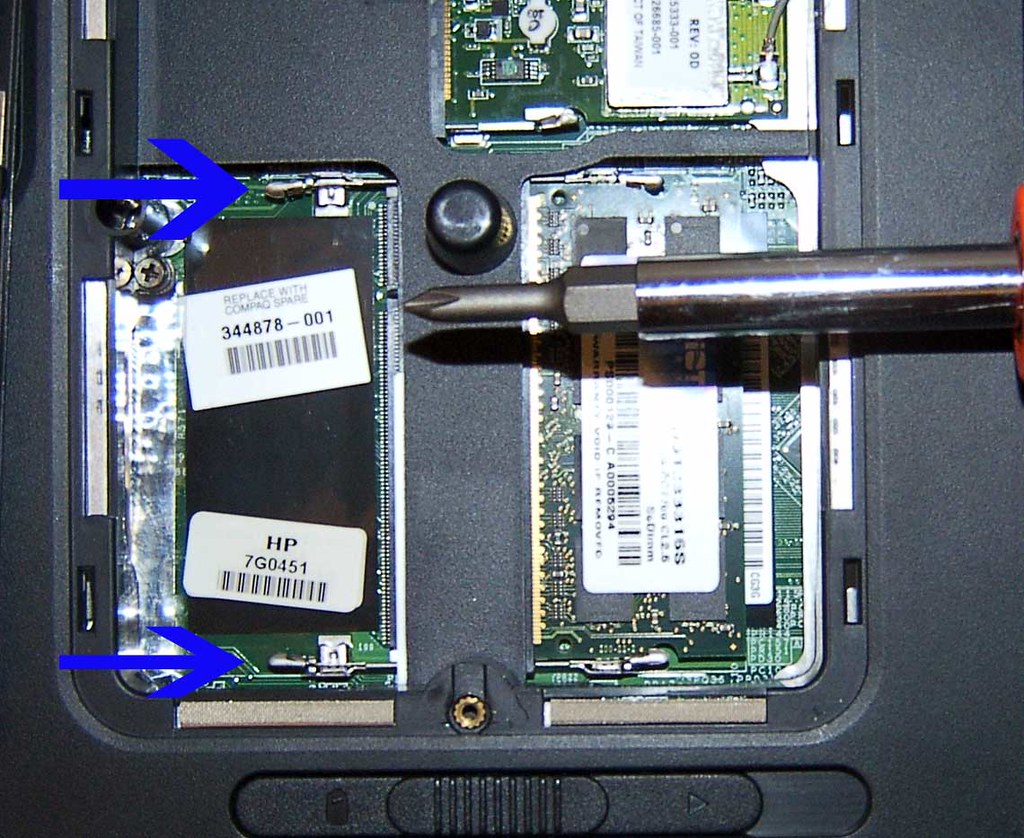This website may contain affiliate links, which means I may receive a commission if you click on a link and make a purchase. While clicking on these links won't cost you any extra money, they will help me keep this site up and running. Your support is appreciated!

Are you tired of your laptop drivers feeling more outdated than a cassette tape? Well, it’s time to hit the refresh button and give your faithful companion the upgrade it deserves! In this article, we will take you on a joyride through the wonderful world of driver updates, where we’ll explore how to keep your laptop running smoothly like a gazelle in a marathon. So, buckle up and get ready to embark on a journey that will unlock a treasure chest of driver knowledge! Because let’s face it, your laptop is long overdue for some tender loving driver care, and we’re here to be your trusty guiding GPS. Let’s dive right in, shall we?
Table of Contents
- Why Keeping Your laptop Drivers Up to Date is Crucial
- Identifying Outdated Drivers on Your Laptop: Where to Start
- The Benefits of Updating Your laptop Drivers Regularly
- Using Windows Device Manager for Driver Updates: A Step-by-Step Guide
- Why Automatically Updating Drivers is a Game-Changer
- Avoiding Compatibility Issues: Finding the Right Drivers for Your Laptop
- How to Manually Update Your laptop Drivers: A Detailed Walkthrough
- Driver Updater Software: Simplifying the Update Process for You
- Troubleshooting Tips: What to Do When Driver Updates Aren’t Successful
- The Importance of Regularly Checking for Driver Updates
- Questions & Answers for
- To Conclude
Why Keeping Your Laptop Drivers Up to Date is Crucial
One of the key factors that can greatly impact your laptop’s performance is having updated drivers. Keeping your laptop drivers up to date is crucial for optimal performance and stability. Drivers are software programs that allow your laptop’s operating system to communicate with various hardware components, such as the graphics card, sound card, and network adapter.
Updating drivers ensures that your laptop is running on the latest software versions, which can provide bug fixes, enhance compatibility with new software, and improve overall system performance. Outdated drivers can cause all sorts of problems, including lag, crashes, freezes, poor graphics, hardware malfunctions and even security vulnerabilities.
So why should you bother updating your drivers? Let me tell you why it’s important:
- Improved Stability: Updated drivers often come with bug fixes and stability improvements, which can help prevent crashes, freezes, and other frustrating issues.
- Optimized Performance: Newer drivers are often optimized to provide better performance and compatibility with the latest software and games. You can expect smoother gameplay, faster file transfers, and overall snappier performance.
- Enhanced Security: Outdated drivers can leave your laptop vulnerable to security threats. Many driver updates also include security patches to protect your system from potential attacks.
- New Features and Functionality: Updating your drivers can unlock new features and functionality that were not available in previous versions. You might even discover hidden capabilities of your laptop’s hardware!
To update your laptop drivers, you can follow these simple steps:
- Identify outdated drivers: Start by checking for outdated drivers on your laptop. You can do this manually by visiting the manufacturer’s website for each component (such as the graphics card, audio driver, or network adapter) and downloading the latest driver version. Alternatively, you can use driver update software, such as Driver Booster by IObit, which automatically detects outdated drivers and provides you with one-click updates.
- Backup your drivers: Before updating any drivers, it is always recommended to create a backup of your existing drivers. This ensures that in case anything goes wrong during the update process, you can easily revert back to the previous working version. There are several driver backup tools available, such as DriverBackup! by MiTeC, which allows you to backup and restore your drivers hassle-free.
- Update drivers regularly: Updating drivers is not a one-time task; it should be done regularly to ensure your laptop is always up to date. Make it a habit to check for driver updates every month or whenever you notice any performance issues. Remember, updating drivers can provide not only performance improvements but also important security patches that protect your laptop from potential threats.
By taking the time to update your laptop drivers regularly, you can enjoy a smoother and more secure computing experience. Don’t underestimate the impact that outdated drivers can have on your laptop performance and stability. Keep your laptop running smoothly by staying on top of driver updates.
Identifying Outdated Drivers on Your Laptop: Where to Start
So you’ve noticed that your laptop is running a bit slower than usual, or maybe you’ve encountered some strange glitches or compatibility issues with certain software or hardware. The culprit could be outdated drivers! Updating your laptop drivers is essential for optimal performance and compatibility with the latest software and devices. We’ll guide you through the process of identifying outdated drivers on your laptop and give you some tips on where to start with updating them.
1. Device Manager
Device Manager is a built-in Windows tool that allows you to view and manage all the hardware devices connected to your laptop. It’s a great starting point for identifying outdated drivers. To access Device Manager, simply right-click on the Windows Start menu and select “Device Manager.” Once opened, you’ll see a list of hardware categories along with their respective devices. Look for any categories with a yellow exclamation mark, as this indicates a problem with the driver. Right-click on the device with the exclamation mark and select “Update driver.” Windows will automatically search for the latest driver software online and install it for you.
2. Manufacturer’s Website
If Device Manager doesn’t find any updated drivers or if you prefer finding them directly from the source, you can visit the manufacturer’s website for each specific device. For example, if your laptop is made by Dell, you can visit their support website and enter your laptop model number to find the latest drivers available for download. This ensures that you’re getting the most up-to-date and compatible drivers specifically designed for your laptop. If you’re not sure about the manufacturer of a particular device, you can use tools like Speccy or CPU-Z to gather information about your hardware and then search for drivers accordingly.
Updating your laptop drivers can greatly improve its performance and resolve compatibility issues with new software or hardware. It’s a relatively simple process that often leads to noticeable improvements. Remember to periodically check for driver updates, especially after major Windows updates or when you encounter any issues. Keep reading as we’ll dive deeper into specific driver update methods and provide more troubleshooting tips for common driver-related problems.
The Benefits of Updating Your Laptop Drivers Regularly

Keeping your laptop drivers up to date is an important task that many of us tend to overlook. However, regular driver updates can provide numerous benefits and enhance the overall performance and functionality of your device. We will discuss the advantages of updating your laptop drivers and provide you with some helpful tips on how to do it effectively.
1. Improved Performance: Updating your laptop drivers can significantly improve its performance. Why? Well, drivers act as intermediaries between your hardware and software, allowing them to communicate efficiently. Outdated drivers can lead to compatibility issues, reduced performance, and even system crashes. Updating your drivers ensures that your laptop components are functioning optimally, leading to smoother and faster performance.
2. Enhanced Security: Another benefit of regular driver updates is improved security. Manufacturers regularly release driver updates to address security vulnerabilities and patch any loopholes that hackers could exploit. By keeping your drivers up to date, you can ensure that your laptop remains protected against potential threats and malware attacks. Ignoring these updates may leave your device and personal data vulnerable to security breaches.
| Driver Updates | Benefits |
|---|---|
| Improved Performance | Faster performance and reduced system crashes |
| Enhanced Security | Protection against malware and security breaches |
| Added Functionality | Access to new features and compatibility updates |
So, how do you update your laptop drivers? It’s easy! Most laptop manufacturers provide a dedicated support page on their website where you can find the latest driver releases. You can visit the website of your laptop manufacturer and navigate to the support or downloads section. Enter your laptop model number or select it from a list, and you’ll be presented with a page containing the available driver updates. Simply click on the download link for each driver and follow the on-screen instructions to install them.
Remember, keeping your laptop drivers up to date is crucial for optimal performance and security. It only takes a few minutes of your time, but the benefits are well worth it. So, make it a habit to regularly check for driver updates and keep your laptop running smoothly and securely.
Using Windows Device Manager for Driver Updates: A Step-by-Step Guide
So you’ve noticed that your laptop is running a bit slower than usual, and you suspect it might be time to update your drivers. Don’t worry, we’ve got you covered with this step-by-step guide on how to use Windows Device Manager for driver updates.
First, let’s start by opening the Windows Device Manager. You can do this by right-clicking on the Start button and selecting “Device Manager” from the drop-down menu. Alternatively, you can press the Windows key + X and choose ”Device Manager” from the menu that appears. Once you have the Device Manager open, follow these steps:
- Locate the device you want to update: In the Device Manager window, you’ll see a list of different hardware categories. Expand the category that corresponds to the device you want to update. For example, if you want to update your graphics driver, you’ll need to expand the “Display Adapters” category.
- Update the driver: Right-click on the device you want to update and select “Update driver” from the context menu. This will launch the “Update Driver Software” wizard. From here, you have two options:
- Search automatically for updated driver software: This option allows Windows to search your computer and the internet for the latest driver. If a new driver is found, it will be automatically installed.
- Browse my computer for driver software: This option is useful if you’ve already downloaded the latest driver from the manufacturer’s website. Choose this option and then browse to the location where you have saved the driver files.
That’s it! By following these simple steps, you can easily update your laptop drivers using Windows Device Manager. Remember, keeping your drivers up to date is essential for maintaining optimal performance and compatibility with the latest software and hardware. So, don’t forget to periodically check for driver updates to ensure your laptop is running smoothly.
Why Automatically Updating Drivers is a Game-Changer

Updating your laptop drivers may not sound like the most exciting task, but trust me when I say that it can make a world of difference. In fact, automatic driver updates are a game-changer that can greatly enhance your overall computing experience. Here’s why:
- Improved Performance: Outdated drivers can be a major cause of performance issues on your laptop. By keeping your drivers up to date, you ensure that your hardware and software are working together seamlessly, resulting in smoother and more efficient performance. Whether you’re gaming, editing videos, or simply browsing the web, updated drivers can make a noticeable difference in how smoothly your laptop runs.
- Enhanced Compatibility: As technology advances, software and hardware developers continuously release updates to improve compatibility with the latest operating systems and programs. By regularly updating your drivers, you can ensure that your laptop remains compatible with the latest software releases. This means you won’t miss out on new features, bug fixes, or security patches that could enhance your user experience and protect your system from vulnerabilities.
But how can you update your laptop drivers automatically? Thankfully, there are a few reliable options available:
- Windows Update: The easiest way to keep your drivers up to date is by enabling automatic updates through Windows Update. By default, Windows automatically looks for driver updates and installs them during regular system updates. Make sure to check your Windows Update settings and enable automatic driver updates for hassle-free maintenance.
- Driver Update Software: If you prefer a more hands-off approach, there are plenty of driver update software programs available that can automatically scan your system, identify outdated drivers, and install the latest versions with just a few clicks. Some popular options include Driver Booster and Driver Easy. These tools can save you time and effort while ensuring that your drivers are always up to date.
Updating your laptop drivers automatically is a game-changer that can greatly enhance your computing experience. Improved performance, enhanced compatibility, and easy maintenance are just a few of the benefits you can enjoy by keeping your drivers up to date. So don’t overlook this important aspect of laptop maintenance – embrace automatic driver updates and unlock the full potential of your device!
Avoiding Compatibility Issues: Finding the Right Drivers for Your Laptop
When it comes to keeping your laptop running smoothly, one important step is updating its drivers. Drivers are software programs that allow your laptop operating system to communicate with its hardware devices. Without the right drivers, you may experience compatibility issues, slow performance, or even system crashes. To avoid these headaches, here are some tips for finding and updating the right drivers for your laptop.
1. Identify Your laptop Manufacturer and Model
The first step in updating your laptop drivers is to identify its manufacturer and model. This information is usually located on a sticker on the bottom of your laptop. Once you have this information, you can visit the manufacturer’s website to find the latest drivers for your specific laptop model. Popular laptop manufacturers like Dell, HP, or Lenovo have dedicated support pages where you can download drivers for your laptop.
2. Use Driver Update Software
If manually updating drivers seems overwhelming, you can make use of driver update software. These handy tools scan your laptop for outdated drivers and automatically download and install the latest versions. This eliminates the need for manual searches and updates, saving you time and effort. Additionally, driver update software often includes features like scheduled scans and backup options, ensuring that your laptop drivers are always up to date and backed up in case of any issues. Some popular driver update software options include Driver Booster and Driver Easy.
How to Manually Update Your laptop Drivers: A Detailed Walkthrough

Common Signs that Your Laptop’s Drivers Need an Upgrade
Does your laptop sometimes feel sluggish and unresponsive? Are you experiencing frequent crashes or error messages? It might be time to give your laptop a much-needed boost by upgrading its drivers!
1. Random Freezing or Crashing: Have you noticed your laptop freezing at random intervals or crashing unexpectedly? This could be a clear sign that your drivers are outdated and incompatible with the latest software updates. Upgrading your drivers ensures that your laptop can handle the demands of modern applications and operating systems without any hiccups.
2. Poor Graphics Quality and Performance: Do you experience pixelated or distorted graphics while watching videos or playing games? Outdated graphics drivers could be to blame! Upgrading your graphics drivers not only improves the visual quality of your laptop’s display but also enhances its overall performance, allowing you to enjoy a seamless and immersive multimedia experience.
3. Unresponsive Input Devices: Are your keyboard or touchpad acting finicky? If you find yourself struggling with unresponsive keys or laggy mouse movements, it’s high time to update your laptop’s input device drivers. By doing so, you can ensure smooth and accurate input, making your everyday tasks and gaming sessions a breeze.
4. Limited Battery Life: Is your laptop’s battery draining faster than usual? Outdated power management drivers could be consuming more power than necessary, leading to reduced battery life. By updating these drivers, you can optimize power consumption, extending your laptop’s battery life and making it last longer on the go.
Now that you’re aware of the common signs indicating the need for a driver upgrade, you might be wondering how to go about updating them. Updating your laptop’s drivers can be a straightforward process. Next, we’ll take a look at the two most common methods for updating drivers.
Manually Update Your laptop Drivers
We’ll now explore the step-by-step process of manually updating your laptop drivers. Whether you’re a beginner or an experienced user, this guide will equip you with the knowledge and tools needed to keep your laptop running smoothly.
Step 1: Identify the Drivers: Before you begin updating your laptop drivers, it’s important to identify which drivers need to be updated. Start by checking the manufacturer’s website for the model-specific drivers. Look for categories like graphics card, audio, network, and chipset drivers. It’s a good idea to take note of the driver versions currently installed on your laptop before proceeding.
Step 2: Download and Install the Updated Drivers: Once you’ve identified the drivers that need updating, head to the manufacturer’s website and navigate to the support or downloads section. Look for the model of your laptop and locate the latest drivers for each category. Download them to a location on your laptop that is easily accessible, such as the desktop. Now, it’s time to install the updated drivers. Start with the most critical ones, such as graphics card or chipset drivers, and follow the installation prompts. It’s crucial to read any accompanying documentation or release notes to ensure a smooth installation process.
In order to prevent any unforeseen issues during the driver update process, it’s highly recommended to create a restore point or backup your important files prior to proceeding. Remember, keeping your laptop drivers up to date not only improves performance but also strengthens security and ensures compatibility with the latest software updates. With the help of this walkthrough, you can confidently update your laptop drivers and enjoy a smooth computing experience.
Driver Updater Software: Simplifying the Update Process for You
Having the latest drivers installed on your laptop is essential for optimal performance and functionality. However, manually updating drivers can be a time-consuming and confusing task. That’s where driver updater software comes in to simplify the update process for you. With just a few clicks, you can ensure that your laptop drivers are up to date and running smoothly.
One of the key benefits of using driver updater software is that it saves you valuable time. Instead of scouring the internet for the latest driver updates, these tools automatically scan your system and identify outdated drivers. They then provide you with a comprehensive list of available updates, allowing you to update multiple drivers at once. This saves you from the hassle of individually downloading and installing each driver.
Not only does driver updater software save you time, but it also ensures that your laptop is running at its best. Outdated drivers can result in various issues, including system crashes, slow performance, and hardware malfunctions. By regularly updating your drivers, you can enhance system stability, improve hardware compatibility, and even unlock new features and functionality. It’s a simple and effective way to optimize your laptop performance.
Some popular driver updater software options include Driver Booster, Driver Easy, and DriverFinder. These tools come with user-friendly interfaces and advanced scanning algorithms to ensure accurate driver detection. They also offer additional features like driver backup and restore, scheduled scans, and automatic updates, providing a seamless experience for users.
In conclusion, updating your laptop drivers doesn’t have to be a daunting task. By utilizing driver updater software, you can simplify the process and ensure that your laptop is running smoothly and efficiently. So, take advantage of these tools and keep your drivers up to date for optimum performance and functionality.
Troubleshooting Tips: What to Do When Driver Updates Aren’t Successful

So, you’ve followed all the steps and tried updating your laptop drivers, but for some reason, it’s just not happening. Frustrating, right? Well, don’t worry, because we’ve got some troubleshooting tips to help you overcome this hurdle.
- Double-check compatibility: Before diving into the troubleshooting process, make sure you’re updating the correct drivers for your laptop model. Manufacturers often release various versions, so verify the compatibility of the driver with your specific hardware.
- Restart your laptop: Sometimes, a simple restart can work wonders. Restarting your laptop before attempting the update again can help clear any temporary glitches or conflicts that may be preventing successful driver installation.
- Disable security software temporarily: Anti-virus or firewall software can sometimes interfere with driver updates. Try disabling them temporarily and then attempt the driver installation again. Just remember to enable the security software once you’re done with the update.
- Update other system components: Sometimes, outdated drivers for other system components can also cause issues with driver update. If you’re facing difficulties updating a specific driver, first try updating other related drivers such as chipset, BIOS, or firmware. This comprehensive approach may solve the problem by ensuring all components are up to date and in harmony.
- Consult manufacturer support: If all else fails, don’t hesitate to reach out to your laptop manufacturer support. They have extensive knowledge of their products and can assist you in troubleshooting specific driver update issues. Their expertise and guidance can save you time and effort in resolving the problem.
Remember, updating drivers is crucial for optimal performance and compatibility. By following these troubleshooting tips, you’ll be well-equipped to overcome any hurdles that come your way during the driver update process.
The Importance of Regularly Checking for Driver Updates
To summarize: Regularly checking for driver updates is an essential task for maintaining the optimal performance of your laptop. Outdated drivers can cause a range of issues, from lagging performance to compatibility problems with the latest software updates. By keeping your drivers up-to-date, you can ensure that your laptop runs smoothly and efficiently.
One of the easiest ways to update your laptop drivers is through the manufacturer’s website. Most laptop manufacturers provide a support page where you can find the latest driver updates for your specific model. Simply locate your laptop model on the website and look for the “Drivers” or “Support” section. From there, you can download and install the latest drivers for your laptop components, such as the graphics card, sound card, or network adapter.
Another option is to use driver update software. These programs scan your laptop for outdated drivers and automatically download and install the latest versions. While this method may be more convenient, it’s important to choose a reliable and reputable software. Some popular options include Driver Booster, Driver Easy, and Driver Genius. Be sure to read reviews and do your research before downloading any software to avoid potential scams or malware.
In conclusion, regularly checking for driver updates is crucial for maintaining the performance and stability of your laptop. Whether you choose to manually update through the manufacturer’s website or use driver update software, keeping your drivers up-to-date will ensure that your good laptop runs smoothly and efficiently, allowing you to enjoy a seamless computing experience. So take a few minutes every month to check for and install the latest driver updates – your laptop will thank you!
Questions & Answers for How to Update Your Laptop Drivers
So, you’re sitting there with your trusty old laptop and wondering how in the world do you update those drivers, aren’t you?
We feel you, friend! It’s a common dilemma, but fret not. We’ve got your back with some handy tips on how to update your laptop drivers and keep your tech running smoothly.
Q: Hold on a sec, what even are drivers? Are we talking about chauffeurs for laptops now?
A: Haha, not quite! Drivers are the software that allows your laptop hardware to communicate with the operating system. They’re like the translators between your laptop components and the magical world of Windows or macOS. Keeping them up to date is essential for a harmonious coexistence between hardware and software.
Q: Okay, got it. So, how do I know if my laptop drivers need an update?
A: Excellent question! You have a few options to explore. Firstly, you can check the manufacturer’s website for any driver updates specifically tailored to your laptop make and model. You can also use programs like Windows Device Manager, which will let you know if any drivers are outdated or missing. Lastly, if you’re feeling adventurous, there are always third-party driver update tools that can assist you in finding and installing the latest drivers.
Q: Alright, I know I need to update my drivers. But how on earth do I do that? Will I need to perform some sort of technical wizardry?
A: No wizardry involved here, we promise! Updating drivers can be a breeze if you follow a few simple steps. To manually update, head to the manufacturer’s website, locate the drivers section, find the latest version for your specific laptop model, and hit that download button. Once downloaded, just double-click the file, follow the instructions, and voilà – your drivers will be updated!
Q: Hey, hey! I like the sound of that, but what if I want to make it even easier?
A: We hear you! Many laptops come with specialized driver update utilities, making the process a whole lot simpler. These tools automatically scan your system, detect outdated drivers, and download the necessary updates for you. Just a couple of clicks, and you’re good to go!
Q: That sounds amazing! But wait, are there any risks involved in updating drivers?
A: Great question! While updating drivers can bring new features and improved performance, there’s always a tiny chance of running into compatibility issues. To minimize this risk, remember to create a restore point before updating any drivers. That way, if anything goes awry, you can roll back to the previous version and avoid any headaches.
Q: Alright, final question – any other tips or tricks to keep in mind while updating my laptop drivers?
A: Glad you asked! Here’s a golden rule: always stick with official drivers from the manufacturers. Third-party sources might seem tempting, but they can bring unwanted surprises. Also, don’t forget to check for regular driver updates, as manufacturers often release new versions to fix bugs, enhance stability, or offer exciting new features.
Q: Well, there you have it – the insider’s scoop on updating your laptop drivers. Thanks for all the great advice!
A: You’re very welcome! Remember, keeping those drivers up to date is the secret sauce for a seamlessly running laptop. Good luck, and may your tech journey be filled with smooth sailing and hassle-free updates!
In Conclusion..

And there you have it – your laptop driver update journey is complete! Pat yourself on the back, because you’ve just leveled up your tech wizard skills.
By now, you know that keeping your laptop drivers up to date is like giving it a rejuvenating spa day. Your laptop will thank you with improved performance, enhanced stability, and possibly even a little appreciation dance deep in its circuits.
Remember, updating drivers doesn’t have to be a daunting task. With our step-by-step guide, you’ve transformed into a fearless driver update conqueror. So, whenever you encounter those pesky compatibility issues or mysterious blue screens of doom, you’ll be armed with the knowledge to tackle them head-on.
But, before we sign off, let’s raise our imaginary glasses and make a toast to your laptop newly updated drivers. May they whisk you away on a seamless browsing experience, take you to new virtual worlds with lightning-fast graphics, and allow you to binge-watch your favorite shows without a single hiccup.
So go forth, my tech-savvy friend, and let your laptop soar to new heights. Keep those drivers updated and your digital kingdom will forever be in harmony. And remember, if you ever need a refresher, just revisit this guide – we’ll be here, ready to support you on your technological adventures!
Feel free to leave us a comment or question!






